

The best eCommerce customers have a high repeat purchase rate and leave positive comments. Say, a proportion of these high-repeat customers start to drop off. They’re buying less, then suddenly not buying at all.
What’s happening? You’re not face-to-face with these customers, so you need a way to understand what’s happening. Voice of the Customer (VoC) is your weapon for protecting your customer loyalty.
How?
By using their feedback to improve customer experience for all.
77% of customers prefer brands that listen to them. Use a Voice of Customer (VoC) program with the right customer tools to get a clear understanding of what they really want and expect from your business. Smoother customer experiences, better products, bigger cart sizes—it all starts with understanding your customers by using their feedback. Incorporating exceptional customer service is pivotal in utilizing VoC to enhance customer experience and loyalty, serving as a cornerstone for business success.
Voice of the Customer (VoC) is a comprehensive approach to understanding your customers' needs, wants, preferences, and pain points. It encompasses both direct customer feedback – what customers explicitly tell you through surveys, reviews, or conversations – and indirect feedback – the behaviors, preferences, and sentiments expressed through actions like website interactions, purchase patterns, and social media engagement.
By systematically collecting and analyzing this rich data, you gain insights that drive meaningful improvements across the customer journey.
A robust Voice of the Customer program provides distinct advantages for eCommerce businesses, existing customers, addressing customer complaints, customer research, and net promoter score, including:
Identifying the root causes of customer dissatisfaction enables you to proactively address issues, prevent customer loss, reduce customer churn, improve online customer reviews, and preserve revenue.
Voice of the Customer data can pinpoint desired features – for instance, by using data from eCommerce Data Scraping Services – understanding customer needs, and friction points in existing offerings, improve customer satisfaction, fueling innovation and ensuring your products genuinely resonate with your target market.
Understanding customer expectations at every touchpoint allows you to design seamless, enjoyable experiences that increase brand and customer loyalty.
Voice of the Customer insights replace guesswork, empowering you to make informed choices about marketing campaigns, pricing strategies, and operational changes that deliver measurable ROI.
Identifying the root causes of customer dissatisfaction enables you to proactively address issues and customer needs, prevent customer loss, and preserve revenue.
A thriving Voice of the Customer program requires a strategic approach. Here are the crucial steps to transform customer feedback into tangible business improvements.
Without clear objectives, your Voice of the Customer program can become a data collection exercise without direction. SMART goals ensure your efforts are focused and measurable, allowing you to track progress and demonstrate the program's value.
Actionable Tactics:
Don't create Voice of the Customer goals in isolation. Consider overall business objectives and identify areas where customer feedback can have the most significant impact (e.g., improving customer satisfaction, customer loyalty increasing order value, improving retention rate).
Consider segmenting your audience based on demographics, purchase history, or behavior. Setting SMART goals for each segment allows you to tailor your Voice of the Customer efforts and address specific customer needs.
Be ambitious but also realistic. Define achievable deadlines based on your resources and the scope of your goals.
Ideally, the Voice of the Customer should reflect the intended Brand Customer Experience.
Customers interact with your brand at every stage of their journey. Each touchpoint—from discovery to purchase and beyond—reveals valuable insights. Choosing the proper channels ensures you capture a holistic view of customers' experiences and gain insights that might be missed by relying solely on surveys.
Actionable Tactics:
Match specific Voice of the Customer channels to the information you need to achieve your goals. For example, use post-purchase surveys to understand customer satisfaction levels after a purchase, while social media listening helps identify emerging trends and brand sentiment.
Choose channels customers are comfortable with. While in-depth surveys provide detailed customer feedback, lengthy questionnaires can lead to abandonment. Balance comprehensiveness with customer experience by offering a mix of short surveys and other channels.
Try implementing only some channels at a time. Based on your goals and resources, begin with a pilot program using key channels. Analyze the data and refine your approach based on what works best for your audience.
Data alone is just information. Analyzing it reveals the insights you need to make informed, impactful decisions for your business. Thematic analysis unlocks the true power of customer feedback, enabling you to identify actionable improvements and make data-driven decisions.
Actionable Tactics:
Don't rely solely on numbers. Analyze qualitative data (open-ended responses, reviews) to understand the "why" behind customer sentiment. Integrate this with quantitative data (CSAT scores, website analytics) to create a comprehensive picture.
Consider using text analytics tools to automate sentiment analysis and identify recurring themes in open-ended customer feedback. The data will help you uncover hidden patterns and prioritize customer concerns.
Stay aware of the data. Analyze results with a "so what?" mentality. Identify trends that translate into actionable recommendations for improving specific aspects of the customer journey (e.g., product features, website navigation, customer service interactions).
Collecting customer feedback is only the first step. A Voice of the Customer program's true value lies in translating insights into action. Closing the customer feedback loop is more than just taking action; it begins with acknowledging customer feedback and addressing their concerns. This initial step builds trust and demonstrates responsiveness.
As your Voice of the Customer program grows, think about sharing insights across your team. It's about giving customers a say in your decisions so you always make choices with them in mind. Here's an essential process to create a customer-centric feedback loop:
Respond promptly to direct feedback (reviews, surveys, support queries) to show customers you're listening. Even a simple acknowledgment builds trust.
Categorize feedback based on urgency and potential impact. Establish clear criteria for prioritizing actions that align with your SMART goals.
Determine the necessary steps to address the customer feedback issues. Assign ownership to teams or individuals, set deadlines, and establish a tracking mechanism.
Be transparent with customers, both individually and broadly. Let them know their feedback is valued, detail your actions, and set expectations for resolution.
Precision is key to customer feedback analysis.
Voice of the Customer data goes beyond demographics. It allows you to understand why your metrics are shifting and segment your customers to improve experiences for those who aren't thriving.
By carefully analyzing feedback patterns, you gain a deeper understanding of your customer's needs, preferences, and behaviors, enabling you to tailor their experiences for maximum impact.
Here's how you can leverage Voice of the Customer data for effective segmentation:
Analyze qualitative feedback data to identify common themes across core customer segments. It uncovers deeper insights into the motivations, pain points, and desired outcomes that distinguish each group, enabling you to tailor your approach accordingly.
Capture feedback metrics and themes at one point in time to establish a baseline. Then, compare these to subsequent feedback gathered after implementing a project to measure the impact of your changes and identify areas for continuous improvement within a specific segment.
Identify trends based on age, location, gender, etc., for targeted messaging and offers.
Track customer actions (website interactions, past purchases) to create segments based on preferences and needs.
This type of segmentation analysis helps you take targeted actions that improve business outcomes. For example, analyzing Voice of the Customer data by segment can reveal insights like where a specific segment will most likely add items to their cart. This lets you personalize their experience by presenting additional recommended products at optimal times.
These targeted actions, based on insights derived from the Voice of the Customer, lead to increased engagement, higher conversion rates, improved customer loyalty, and, ultimately, a boost to your bottom line.
Use generative AI tools like Thematic Answers to help everyone in the business gain insights into their workflow. With Thematic Answers, you can ask natural-language questions about your customer feedback (e.g., "What are the main frustrations for mobile app users?") and receive instant, insightful answers backed by your VoC data and customer verbatim.
Immediate insights empower CX professionals and other teams to understand feedback and make informed decisions.
Have a simple framework to evaluate potential actions based on Voice of the Customer insights, considering the following:
Prioritise actions with high potential impact and relatively low effort. Develop a roadmap with clear milestones and accountability for long-term initiatives to demonstrate progress and track outcomes.
Here's a breakdown of 7 essential customer tools to streamline your Voice of the Customer efforts, customer experience management, analyze customer behavior, along with key features and considerations.
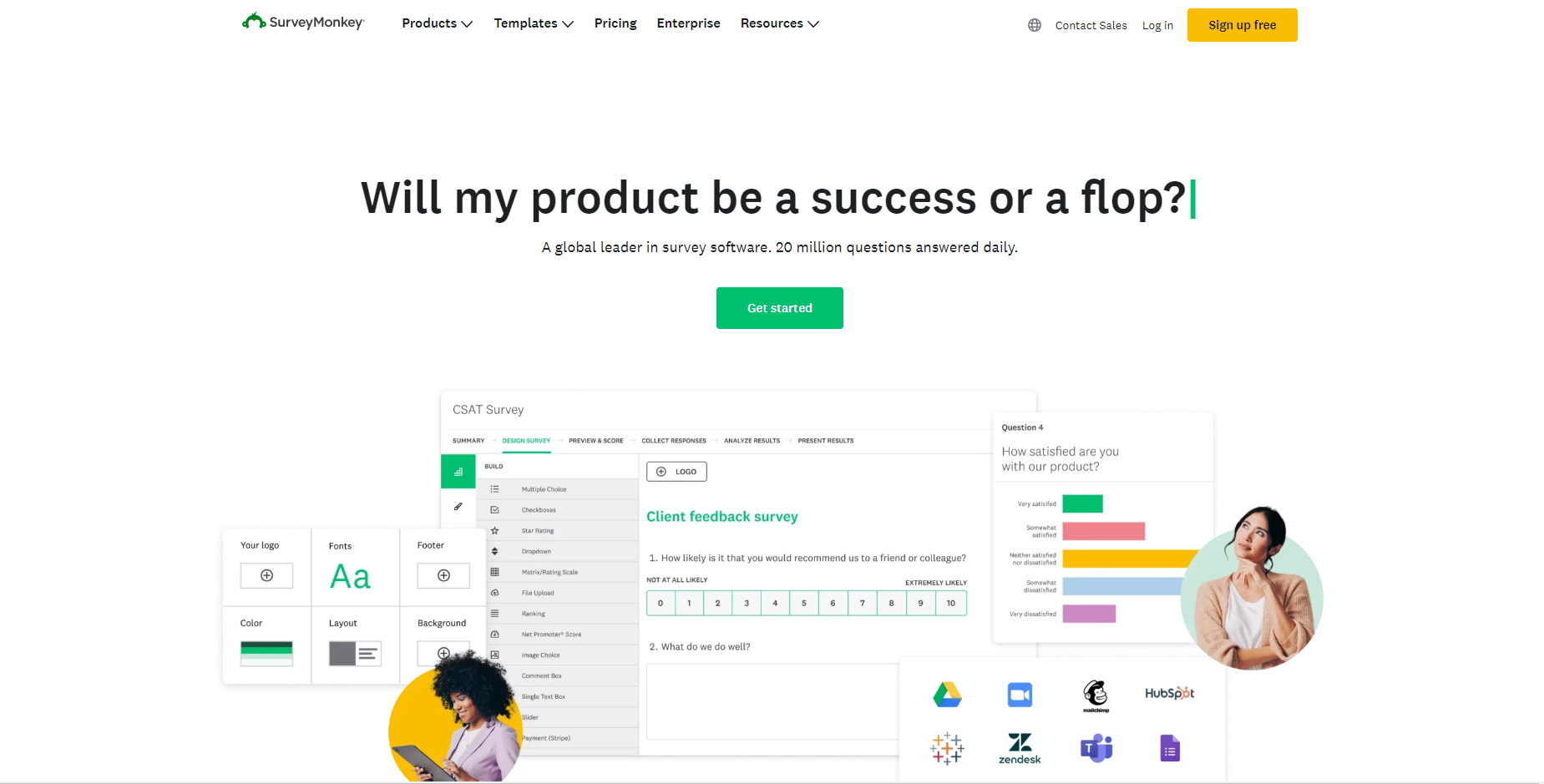
Type: Survey Platforms
Key Features: Flexible customer survey design, online surveys, customizable templates, various question types (multiple-choice, open-ended, rating scales), logic and branching capabilities, and robust reporting & analytics for business success.
Why They're Great for VoC: Surveys offer a controlled, structured way to collect customer feedback and customer interviews, allow you to target specific customer segments, gather insights directly related to your SMART goals and customer loyalty.
Price: Starts at $25. Enterprise-level support and plans available
“The SurveyMonkey integration has allowed us to sync NPS data back to the Account and Contact objects for use in reporting in both Salesforce and Tableau. The SurveyMonkey reports in Salesforce are really useful and allow for NPS visibility across all teams and departments. We've used this data in Tableau to create email alerts based on NPS in order to closely monitor customer health and automate the response process.”
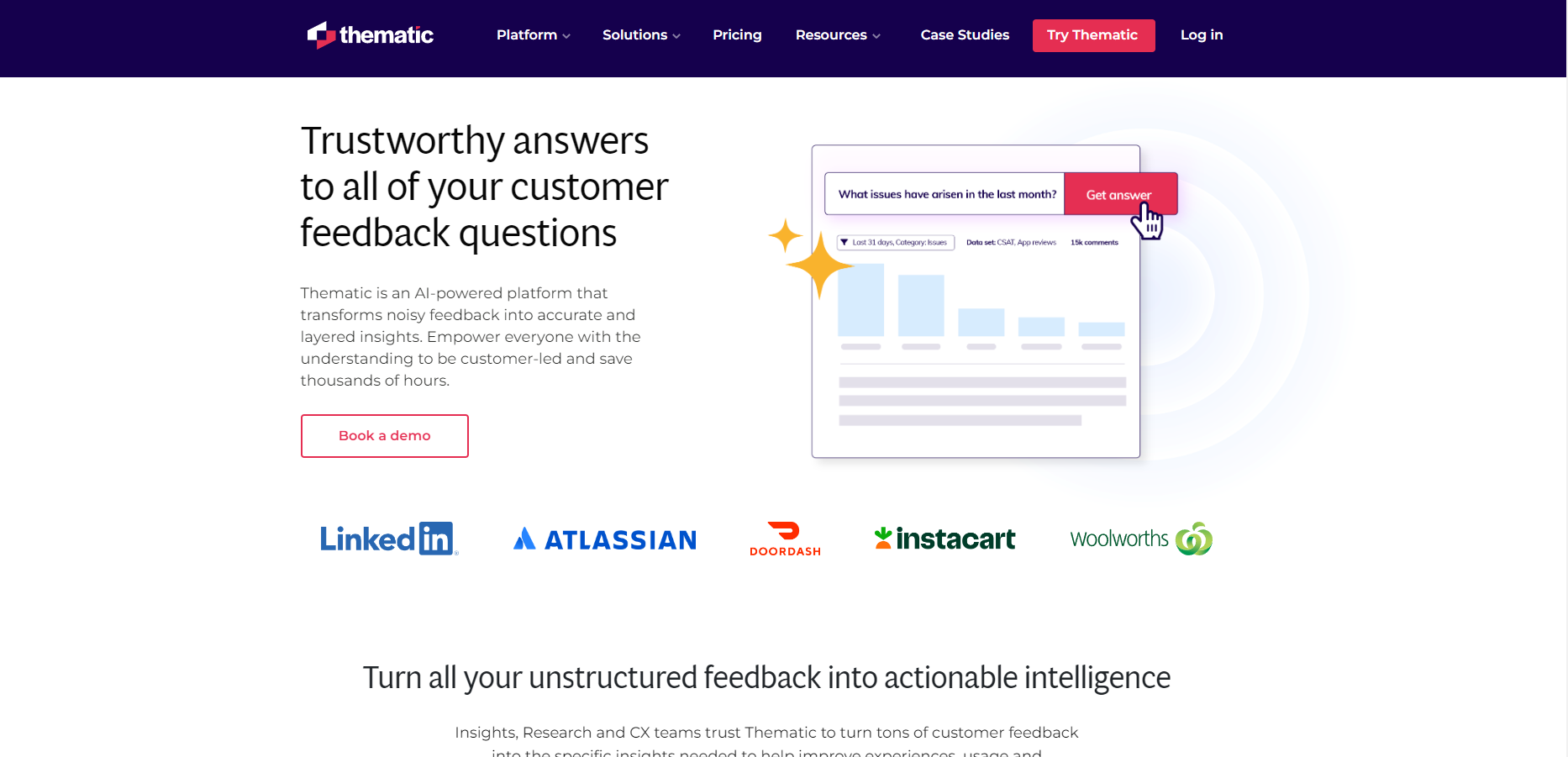
Type: Feedback Analytics & AI-Powered Voice of the Customer Platform
Key Features: Transforms all the unstructured text responses from any channel, customer surveys, feedback forms, and customer input into insights that inform specific business improvements, improve customer relationships, turn qualitative feedback into quantitative data, and increase customer acquisition. Identify pain points and what's driving your metrics, pick up emerging issues, negative feedback and track CX initiatives' impact on customer experiences. Advanced sentiment analysis, Impact and driver analysis. Built for the precise needs of analysts and researchers, with a generative AI Answers feature that anyone can use.
Why They're Great for VoC: AI-powered analysis saves thousands of hours, helping decision-makers get deep, actionable insights much faster for your VOC strategy. The analysis is easy to validate and make more precise, for insights that drive better business decisions for your customer journey.
Price: Free guided trial available
“Thematic helped us bring the voice of the customer closer to the staff, who have the power to take action on the customer feedback. The impact view helped us prioritize the things that significantly affect the Net Promoter Score. As a result, it helped us improve our NPS and the overall customer experience.”
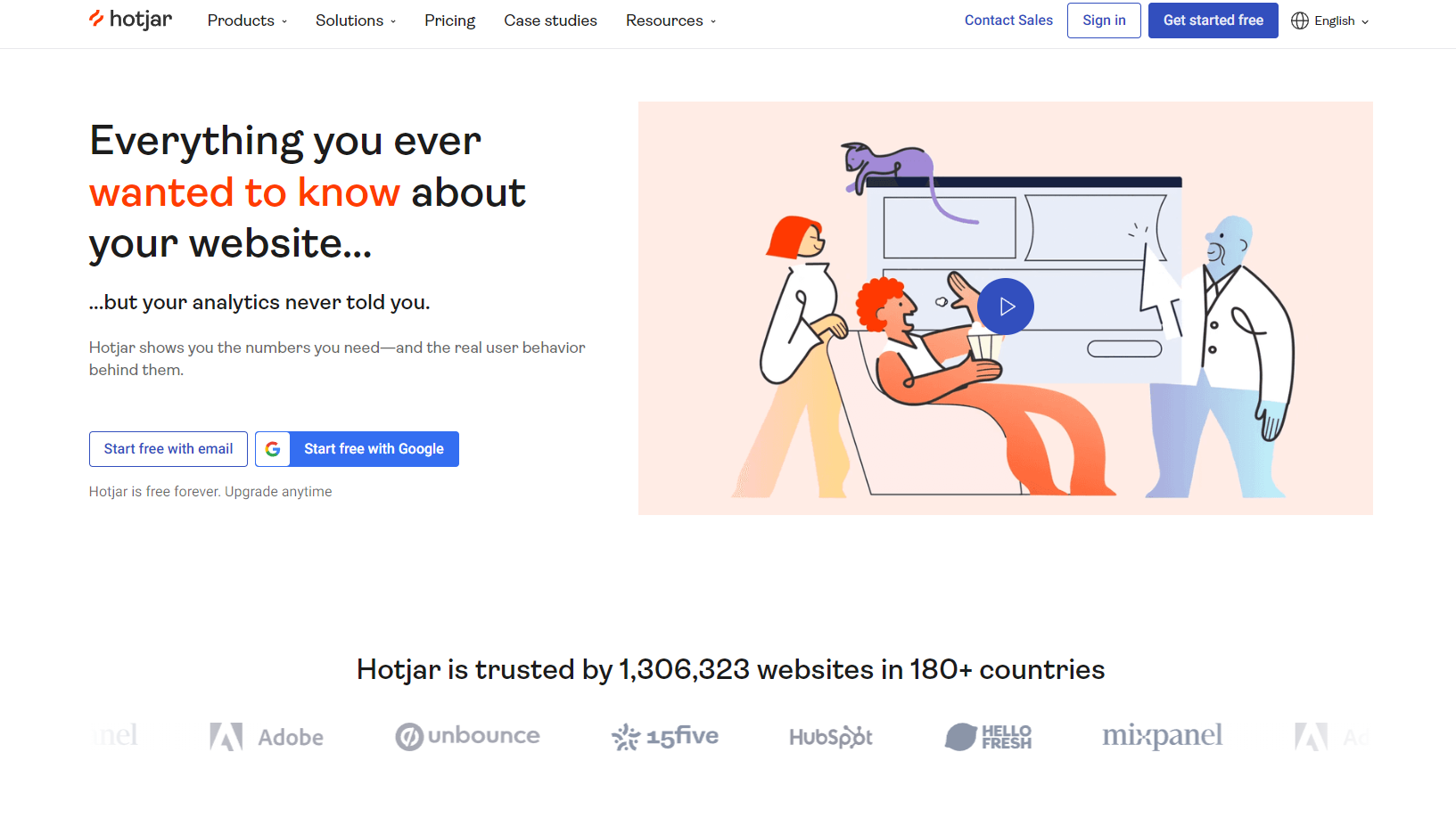
Type: Website & App Feedback Tools
Key Features: Heatmaps, session recordings, on-site polls, targeted feedback widgets, and video feedback capabilities.
Why They're Great for VoC: These behavioral research tools offer real-time insights into how customers interact with your website or app, collect customer feedback, and how customers perceive your usability. They help pinpoint areas of friction, identify usability issues, and capture immediate reactions and sentiments. Price: Basic free forever plan available, starting at $39 for Plus, Enterprise support available.
“The heatmaps are just fantastic! Imagine having the ability to see your website through your users' eyes, understanding their clicks, scrolls, and movements. This is what Hotjar's heatmaps offer. It's almost like being able to read minds.”
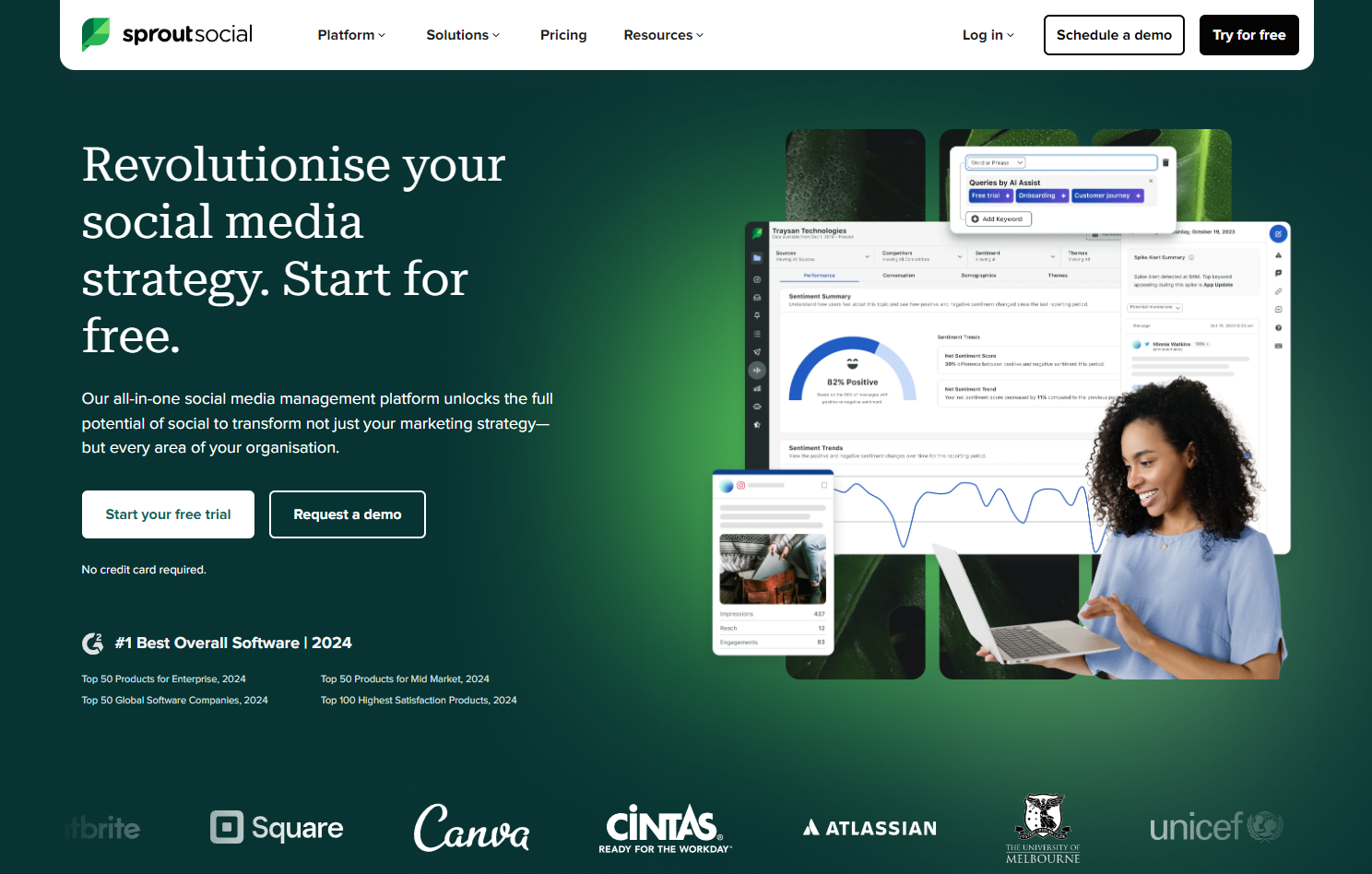
Type: Social Listening & Monitoring
Key Features: Track brand mentions across social platforms, analyze sentiment, identify trends and emerging pain points, monitor competitors, and measure social media engagement.
Why They're Great for VoC: Social media is where customers candidly express opinions about your brand. Monitoring these conversations reveals unfiltered feedback, online reviews, customer preferences, helps you proactively address issues, customer pain points, and uncovers opportunities for improvement in areas such as customer service efforts.
Price: Standard plan starts at $249 monthly, and enterprise support is available.
“I love the advocacy integration feature. We can utilize our own employees to help increase our reach on specific content. I already love the scheduled publishing tool in sprout let's us stay within the timewindow for campaigns and utilizing the reports tool to see what content reasonates with our audience. The tool itself is definitely user friendly.”
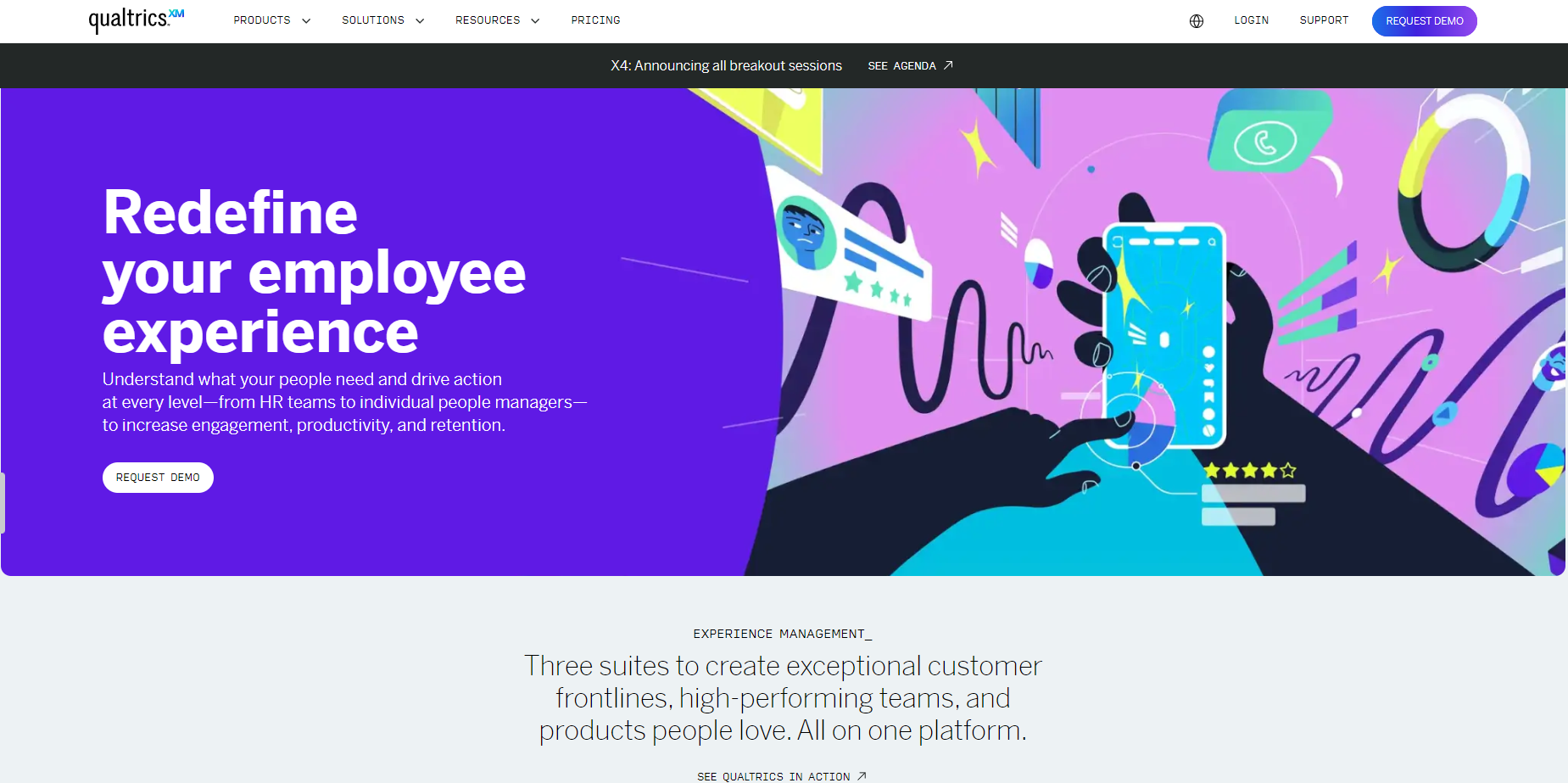
Type: Customer Experience Management (CXM) Platform
Key Features: Comprehensive suite for collecting customer feedback via surveys, email, website intercepts, and more. Offers closed-loop ticketing for proactive follow-up, experience management dashboards, role-based access, and advanced reporting.
Why They're Great for VoC: Qualtrics streamlines data collection at various touchpoints, enabling companies to proactively gather feedback, track CX metrics over time, close the loop with customers to address issues and gain valuable insights.
Price: Pricing based on custom needs and features required. Contact for a quote.
“Qualtrics customer experience is great online survey platform to measure customer experience. Easy to create interactive surveys using the drag and drop functionality and can be easily be customized in many ways . Large variety of questions types and branching logic. The tool aslo gives feedback to surveys and aslo it's easy to setup NPS dashboards for each department in our organization that enables us to track results very easily.”
Important Note: Qualtrics includes text analytics based on a pre defined taxonomy and rules. Businesses often pipe their data from Qualtrics into specialized platforms like Thematic for a faster way to get tailored and precise insights from open-ended text data.

Type: Review & Rating Management
Key Features: Gather and manage reviews and ratings across your website and third-party platforms, analyze sentiment, respond to reviews, syndicate positive reviews for social proof, and generate review-based insights reports.
Why They're Great for VoC: Reviews are rich in qualitative feedback, highlighting specific product strengths and weaknesses. Review management tools streamline the process and help extract actionable insights to improve products and overall customer experience based on valuable feedback.
Price: Standard plan starts at $250 per month per domain, enterprise plan available.
“As customer we do not always have a voice. Positively or negatively Trust Pilot provides a platform whereby we can share experience, provide guidance to others so that they can make their own informed decisions.”
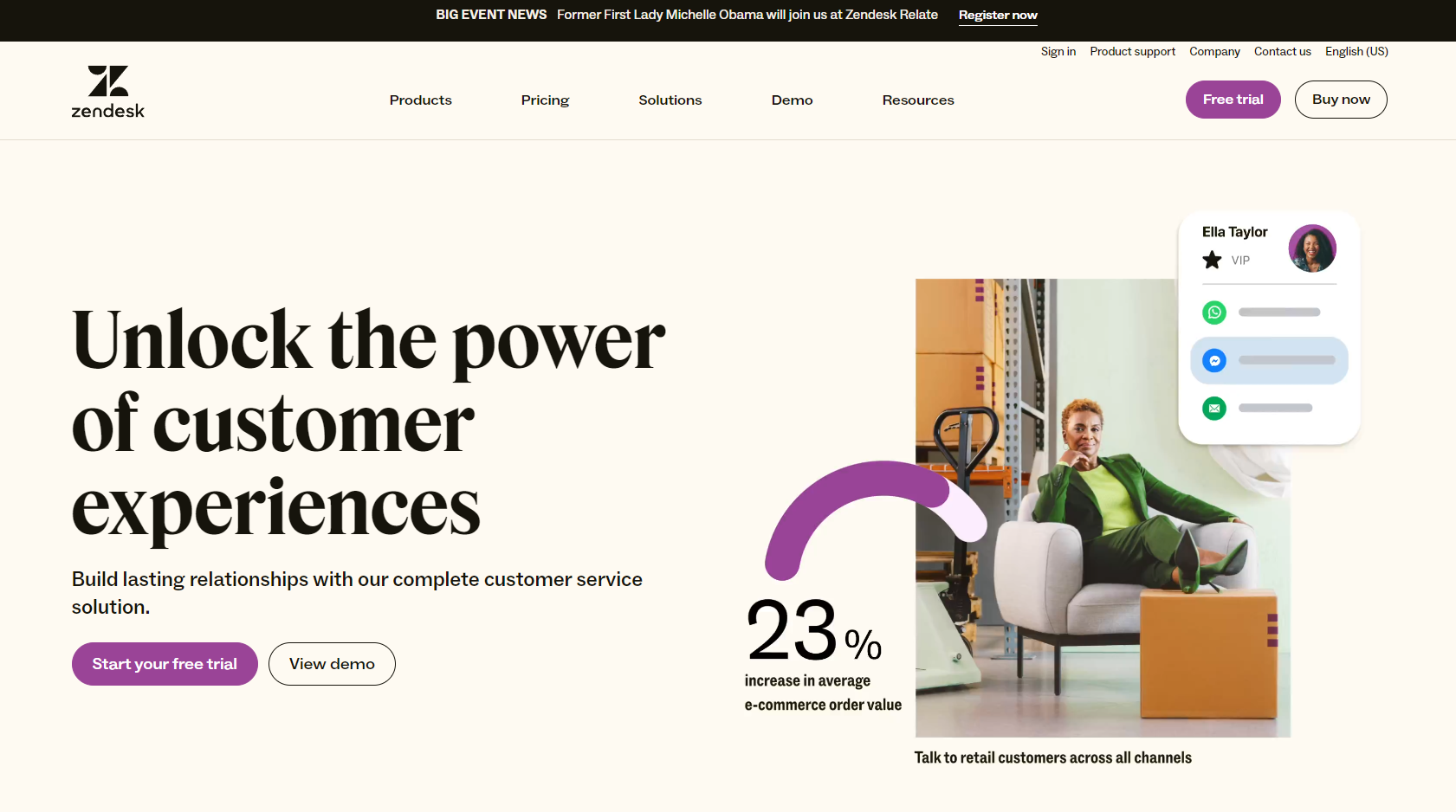
Type: Customer Support & Ticketing
Key Features: Omnichannel ticketing (email, chat, social, etc.), knowledge base and self-service options to answer customer questions, ticket routing and automation, customizable workflows, and reporting dashboards.
Why They're Great for VoC: Customer service interactions are a treasure trove of Voice of the Customer data. Zendesk organizes and tracks support requests, making it easier to identify recurring issues, pinpoint areas for product improvements, and measure customer satisfaction with support processes.
Price: Starts at $19/agent per month, with additional tiers with extended features available.
“I do really like the Support platform from a user perspective, and the trigger system is wonderfully dynamic and flexible. I like that form fields and are searchable now (terrific improvement). The marketplace is great for additional enhancements. Macro's are great for standardizing user responses.”
Voice of the Customer isn't a one-time project; it's an ongoing journey of listening, learning, and adapting. By embracing Voice of the Customer, you embark on a path of continuous improvement, building a customer-centric business that consistently exceeds expectations. Remember, every piece of feedback is a valuable nugget of insight, fueling your future success.
Let Thematic be your guide on this journey. Our AI-powered analysis tools streamline the process, revealing hidden insights that drive meaningful change. Give your teams instant insights and answers, and book a demo today
Join the newsletter to receive the latest updates in your inbox.